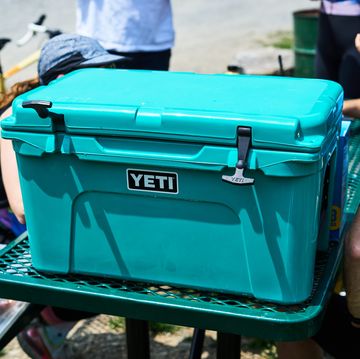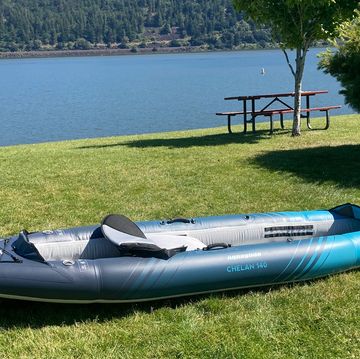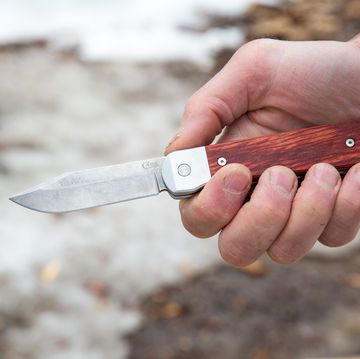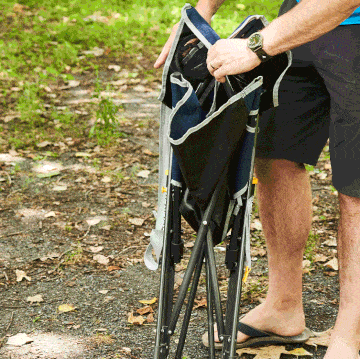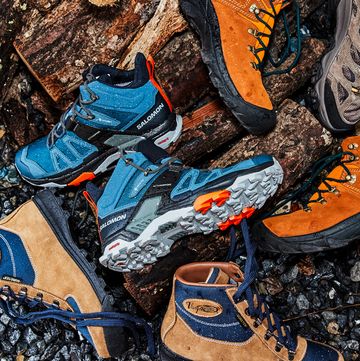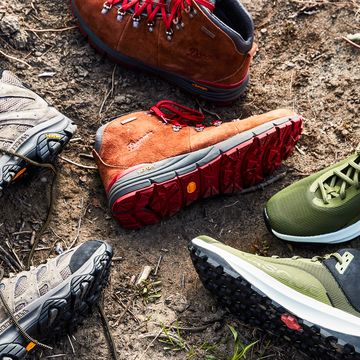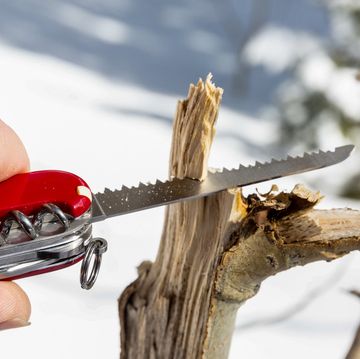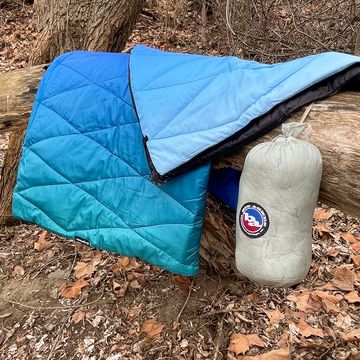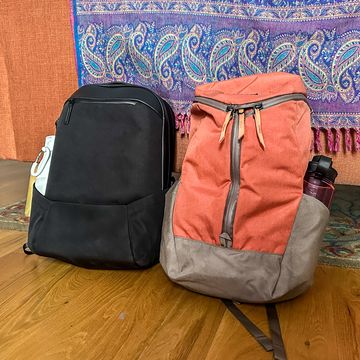We’ve all heard Fourth of July fireworks horror stories: burns, blown-off appendages, fires, and disasters. But despite the serious risks, fireworks use has, well, exploded over the last few decades. (Credit the steady relaxation of state laws nationwide.) Right now, every state in the country except Massachusetts allows the sale and use of consumer fireworks.
But even though you won’t be able to walk into a Walmart or Target this week without seeing massive, colorful displays of prepackaged guerrilla warfare kits, there’s a ray of light breaking through the smoky aftermath of that Everlasting Extravaganza detonation: Injuries appear to be on the decline.
Though the U.S. Consumer Product Safety Commission (CPSC) found that there hasn’t been a statistically significant decrease in fireworks-related injury estimates between 2003 and 2018 overall, there has been one between 2017 and 2018, with the number dropping from 12,900 to 9,100. That’s progress.
According to Julie Heckman, executive director of the American Pyrotechnics Association (APA), the reason for this perhaps-counterintuitive trend has to do with both the quality of the fireworks and the legalization of their use. “When they’re allowed to use them, consumers actually take the time to read the instructions,” Heckman notes. “When they’re breaking the law, on the other hand, they do it carelessly because they’re in a hurry and don’t want to get caught. That’s when mishaps occur.”
Additionally, despite product names and package graphics that sound more like Vegas slot machines—Total Dominance, Great Night Extravaganza, Magic Hour, Eruption, Radiant Orbs, Bazinga Blast, Wicked Pissah—the industry itself is actually sophisticated and well-regulated.
For starters, almost all fireworks are made in China, which is, of course, their birthplace. Chinese manufacturers hand-assemble the devices to ensure quality and safety, and Heckman notes there are independent third-party tests conducted to confirm the products meet or exceed U.S. safety standards. Great attention is paid to the devices’ sensitivity to heat, humidity, and transportation, as well as to things like fuse burn time and resistance to tip-over for ground-based mortars and such.
It’s virtually impossible for consumer fireworks to detonate without an actual ignition source. Warnings are comprehensive, and instructions precise.
But while more conscientious use and higher-grade munitions means you can have fun this Fourth of July without turning yourself into a gory cautionary tale, you still have to be careful. So here’s a helpful guide to having a blast over the holiday without losing an appendage.
Is it okay to buy fireworks from independent dealers?
No. If they’re selling fireworks out of the back of an old van or hawking illegal explosives such as M-80s, cherry bombs, and quarter-sticks, steer well clear. There are no manufacturing guidelines for this sort of contraband because it’s all bootleg.
Instead, look for colorful packaging, instructions, and warning labels, Heckman advises. “It’s really important to purchase from a reputable fireworks dealer in highly public places, not on a dirt road somewhere,” she says.
Also, if it’s in a brown paper bag or a white canister, that’s a sign it’s a professional product. As tempting as it may be to upgrade yourself to pro gear, this isn’t the field you want to do it in.
How do you actually light fireworks?
The best way is to use what are called “punks”—long bamboo sticks with compressed sawdust. These can be lit and will smolder long enough to be used to ignite the fuse without risking catching anything else on fire or burning the user. A long barbecue lighter also works, but remember to use with your arm extended and don’t position your body, hair, or loose clothing over the device as you’re lighting it, Heckman says. Safety glasses are probably a good idea, too.
Can I let my kids use fireworks?
We certainly don’t want to deprive your kids of the joy of sparklers, but on the other hand … yes, we totally do. According to the CPSC, sparklers are thought to be relatively harmless, but they actually burn at a very high temperature—up to 1,800 degrees Fahrenheit—and can burn children playing with them. Supervise your kids and make sure that all the spent sticks are collected and dropped in water, since they can remain hot for a while after going out.
How else do people get injured from fireworks?
Mostly it’s from product misuse, Heckman says. “If the instructions say ‘do not hold this in your hand,’ then do not hold it in your hand! If it says place on flat, level surface, do that,” she says.
Then there’s general horsing around. For instance, exuberant revelers will try holding reloadable tubes in their hands or over their heads or chest, shoot mortars sideway, or pull off other dumb stuff. Fireworks like that are meant to be placed on flat, hard surfaces, and observed from a distance of 20 to 25 feet.
Don’t accept dares, don’t do it for the ‘Gram, and don’t try setting them off after you’ve had a few drinks. There’s a lot of energy in those tubes and a lot of recoil that can lead to fatalities. If you’re setting off airborne fireworks, consider placing a sheet of plywood on the ground or doing it on pavement to ensure that there’s little risk of tip-over, Heckman says.
Everyone in my neighborhood is setting off fireworks. Is someone’s house going to catch fire?
It’s certainly a possibility. Even though fireworks are generally safe to use, they’re still small explosives carrying the risk of fire. So the APA recommends only lighting them in an area free of debris and dry brush, and away from your and your neighbor’s homes.
Wet down the lawn and have a garden hose or bucket of water nearby. Light just one at a time, and again, make sure the person doing it is sober and responsible. Also, Heckman likes to remind people that it’s important to be a courteous neighbor.
“Now that the laws have relaxed, they’re much more common in neighborhoods,” she says. “But there might be elderly people around, veterans with PTSD, families with small children and pets. Tell them what you’ll be doing so they can be ready and maybe even keep their pets inside.”
How do you dispose of used and unused fireworks?
Most of the fireworks are designed to burn themselves completely, but some will still have canisters and containers—and then there are all those sparkler sticks. For any of the devices that have leftover components, let them soak in a big bucket of water overnight.
If there are leftovers and you don’t want to set them off, bring them to the fire department and they can dispose of them properly. It’s okay, however, to store them yourself—they don’t have a shelf life and they won’t self-ignite on their own.
Eric Adams is a writer and photographer who focuses on technology, transportation, science, travel, and other subjects for a wide range of outlets, including Wired, The Drive, Gear Patrol, Men's Health, Popular Science, Forbes, and others.


